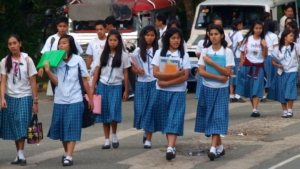Pantawid Pamilyang Pilipino Program in the Philippines
 The Pantawid Pamilyang Pilipino Program in the Philippines, known as the 4Ps, is a conditional cash transfer program developed by the World Bank and the government of the Philippines in 2007. The 4P’s main objective is to provide financial assistance to the impoverished to “improve the health, nutrition and the education of children aged 0-18.” Due to the COVID-19 pandemic, the poverty rate in the Philippines rose to 23.7% in the first six months of 2021, meaning at least 3.9 million Filipinos endured poverty. To combat the high poverty rate and a lack of social safety net, the 4Ps program helps impoverished households to break cycles of poverty.
The Pantawid Pamilyang Pilipino Program in the Philippines, known as the 4Ps, is a conditional cash transfer program developed by the World Bank and the government of the Philippines in 2007. The 4P’s main objective is to provide financial assistance to the impoverished to “improve the health, nutrition and the education of children aged 0-18.” Due to the COVID-19 pandemic, the poverty rate in the Philippines rose to 23.7% in the first six months of 2021, meaning at least 3.9 million Filipinos endured poverty. To combat the high poverty rate and a lack of social safety net, the 4Ps program helps impoverished households to break cycles of poverty.
Beneficiaries of Pantawid Pamilyang Pilipino Program
The program specifies certain criteria for eligibility. The beneficiaries must live in the poorest municipalities, in accordance with the 2003 Small Area Estimates of the National Statistical Coordination Board. In addition, a household must be living at or below the “provincial poverty threshold.” The household must also have children between the ages of 0 and 18 years old. Households with pregnant women are also eligible. In 2022, the 4Ps program assists “more than 800,000 families classified as poor and near-poor based on the Standardized Targeting System and the poverty threshold issued by the Philippine Statistics Authority.” Since 2008, the 4Ps program has served more than 5 million impoverished households.
The beneficiaries are able to receive two types of grants, including a health grant of ₱500 per household per month and an education grant of ₱300 per child per month for 10 months. Mikee Romero, one of the writers of the law institutionalizing 4Ps, told the Philippines News Agency in September 2020 that the program’s ₱169.3 billion budget for 2021 “also includes ₱41 billion “for social protection programs like medical, transportation and burial assistance” and ₱4.3 billion “for disaster response, such as the provision of relief goods.”
Effectiveness of 4Ps
The implementation of Pantawid Pamilyang Pilipino Program in the Philippines has increased the utilization of health and education services. Children face lower risks of enduring poverty in adulthood as the program aims to break intergenerational cycles of poverty through the provision of resources and services necessary for growth and development.
The 4Ps program has helped to increase school attendance rates as it offers financial assistance for education and has a strict rule of “85% attendance a month” for child beneficiaries of the program.
A Herald Express article published in August 2018 says, “The 4Ps program has smoothly bridged the gap from poverty to an improved living condition among its beneficiaries.” The article also highlights that the 4Ps “changed the behavior of learners and their attitude toward learning” and helped improve the academic performance of generally low-performing learners.
In addition, 4Ps offers educational seminars with topics ranging from financial management to the importance of women in society and works with Sustainable Livelihoods Programs (SLP) to help families develop income-generating activities to build a better future. The 4Ps program strengthens labor skills and opens up economic opportunities for the impoverished in the Philippines. The program provides microfinance services and training to those who engage in the SLP. Through skill training, beneficiaries are more likely to increase productivity and rise out of poverty.
A Look Ahead
The Pantawid Pamilyang Pilipino Program in the Philippines helps break the poverty cycle. The program also increases the ability of households to provide for their children and family needs. Overall, the 4Ps model looks to improve quality of life by providing the impoverished with the resources, services and skills to thrive.
– Jiaying Guo
Photo: Wikimedia Commons
